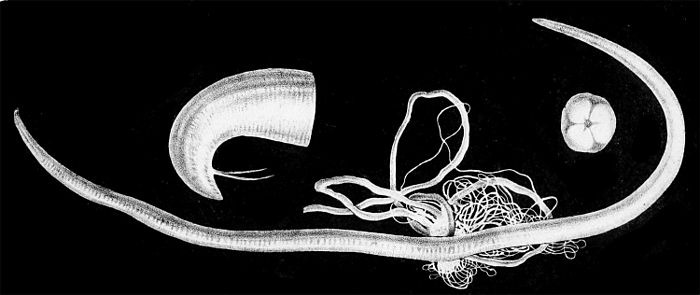|
Date & Time : 27, July 2024 01:29
Systematic Position
Phylum: Nemathelminthes
Class: Phasmidia
Genus: Ascaris
Species: lumbricoides
Common Name: Giant Round worm
Habit and habitat
Ascaris is an endoparasite and lives in the small intestine of man.
Distribution
Ascaris lumbricoides is one of the most common nematodes distributed throughout the world affecting more than one billion people. These are more prevalent in areas with warm and moist climates. Infection is most common in tropical and subtropical areas especially in areas with poor sanitation and hygiene. Though, it is very common in India, the incidence of infection is the highest in Korea and Phillipines.
Identifying Features
- Body is elongated, cylindrical and pointed at both the ends.
- Body surface is marked with 4 longitudinal lines namely - mid-dorsal line, mid ventral line and two lateral lines.
- Mouth is provided with two types of lips; median dorsal lip, and submedian ventral lips.
- Lips have special sensory receptors called papillae and amphids. These are chemoreceptive in function which detects the chemical nature of food.
- Sexes are separate and sexual dimorphism is well-marked.
- Male has three openings while female has four openings.
- Male has a pair of penial setae arising from its cloaca.

Ascaris lumbricoides - Male and Female
Case Study
| Endoscopy showing Ascaris lumbricoides in duodenum
A 34 year old female resident of rural China complaint of nausea, vomiting, vague abdominal pain and fever. Doctors performed an upper endoscopy and found a live Ascaris in the second portion of the duodenum. The roundworm was retrieved using a basket and once secured, both worm and endoscope were removed from the patient. The length of the organism was about 20cm in total, and it exhibited continued movement.
http://daveproject.org/duodenum-ascaris-lumbricoides/2004-05-10/
|
|